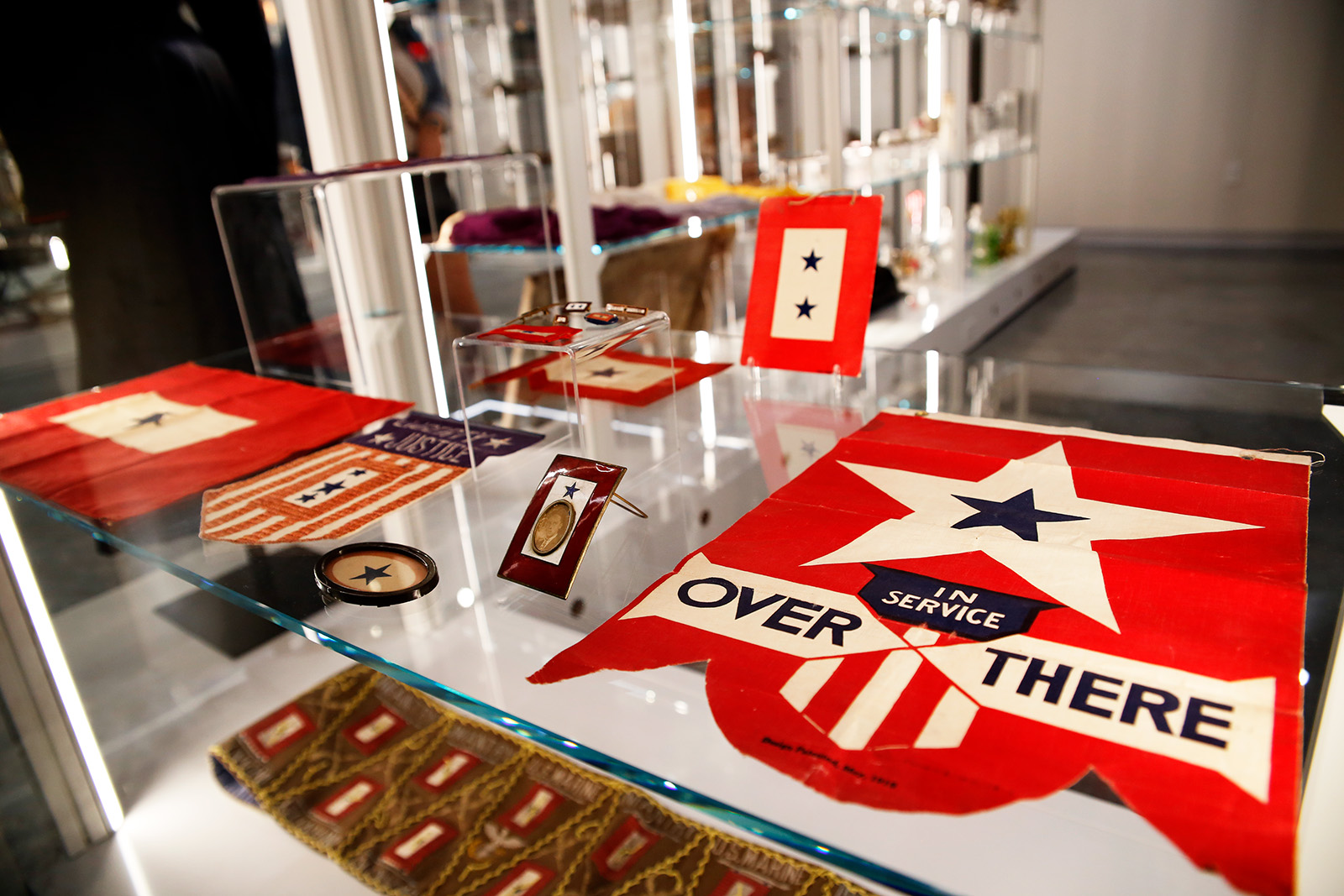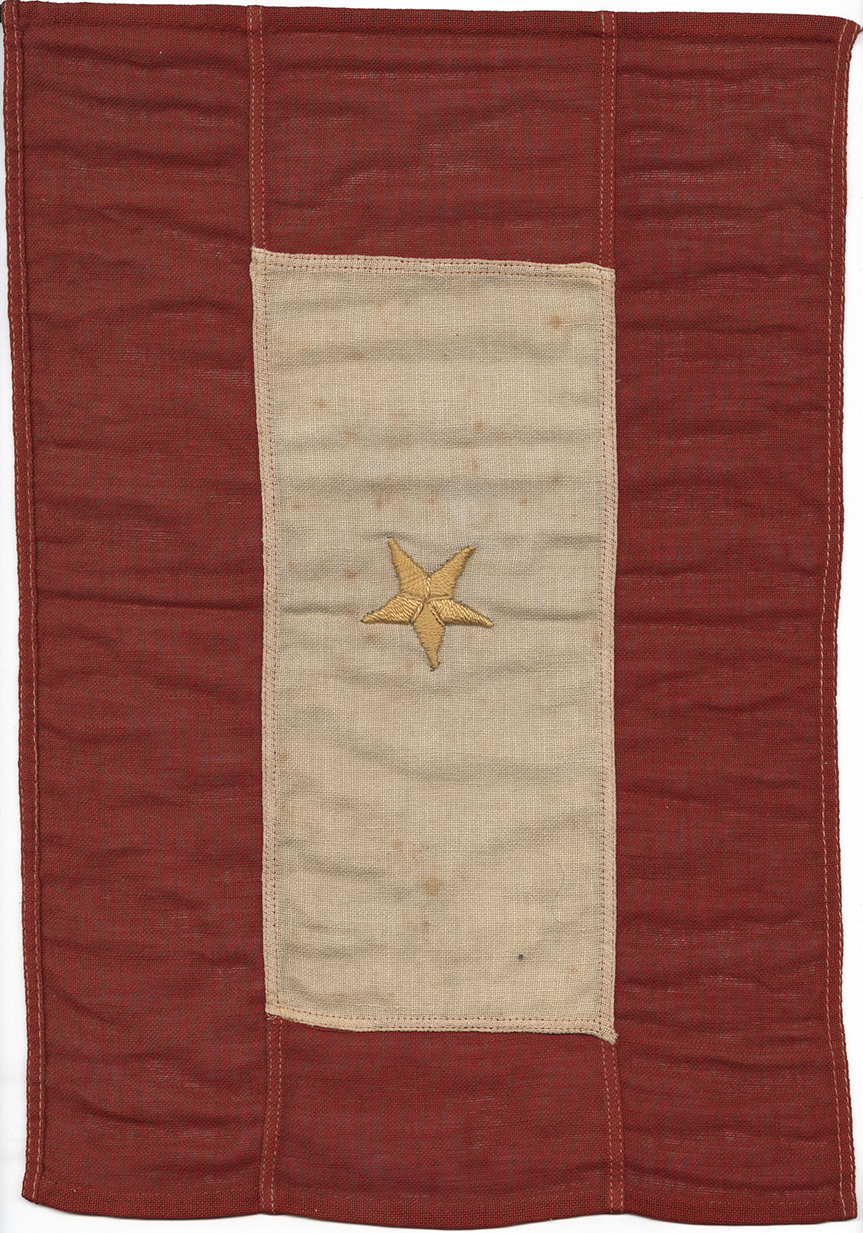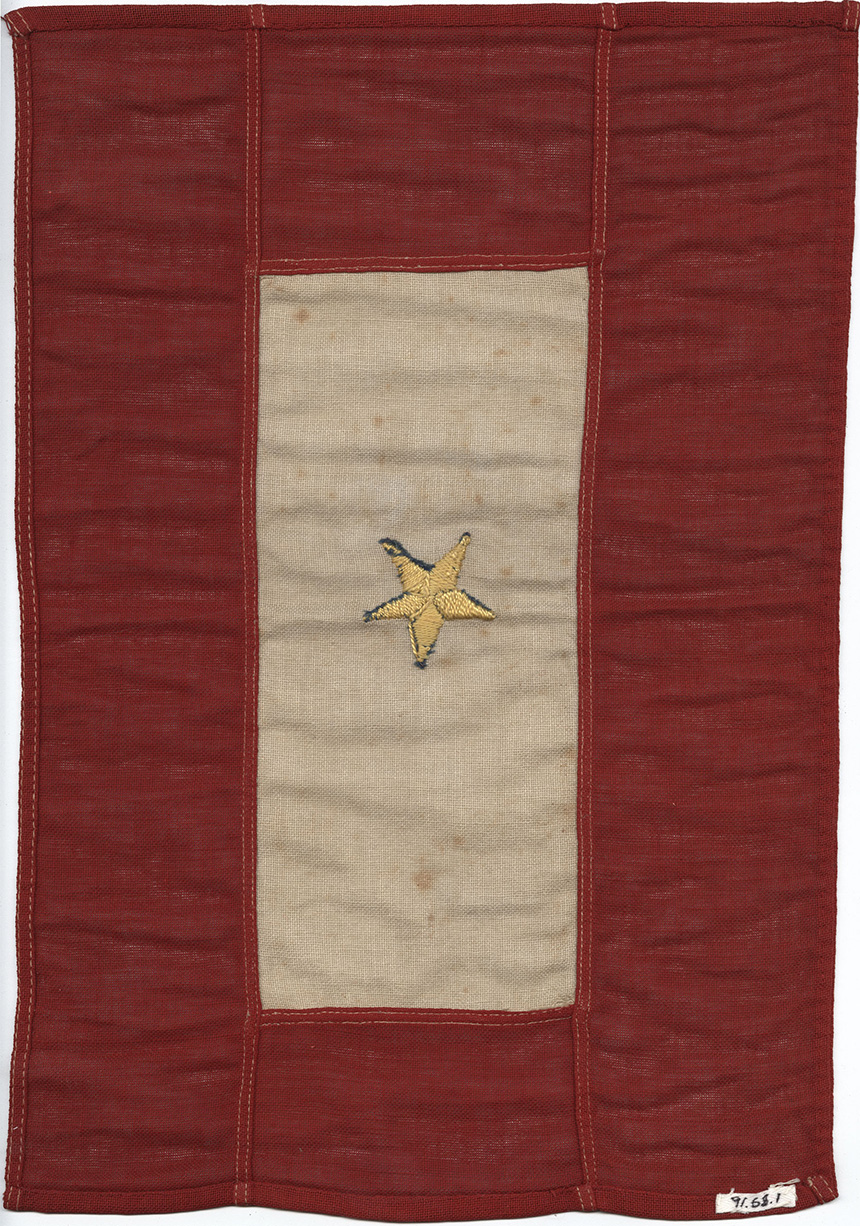Discover more about Blue Star and Gold Star flags and related objects in the Bergman Family Gallery and Open Storage Center

The service flag, also known as the Blue Star flag, is an official banner authorized by the Department of Defense (DOD) for families who have members serving in the United States Armed Forces. With a white field, a red border and one blue star representing each family member in service, the Blue Star flag is a powerful patriotic symbol. According to the DOD, families of service members have the option of displaying the flag in a window for the duration of any conflict involving the United States.
The service flag’s origins date back more than a century. During World War I, Captain Robert L. Queisser of the 5th Ohio Infantry created and patented the Blue Star flag design in honor of his two sons serving overseas. The flag soon became the unofficial symbol for a child in service.
In 1918, the Women’s Committee of the Council of National Defenses presented a request to President Woodrow Wilson that would allow mothers who had lost a son to sew a gold star onto the traditional black mourning bands. Black armbands signified a person in mourning, and the addition of the gold star symbolized mourning a son lost to the war. President Wilson approved this request, which transformed into the practice of sewing a gold star atop a blue star, as seen on this flag.
Turning a Blue Star flag into a symbol of memorialization was, and still is, a profound act. Some period sources found in newspapers suggest the gold star should entirely cover the blue star, while other material examples show a blue border around the gold star. Leaving a blue border would show that the family member had died in service but would always be remembered for their sacrifice. As women and families hand-stitched these flags, the exact pattern changed, sometimes reflecting regulation, and sometimes indicating personal choice.


The gold star appears to have been embroidered over a blue star.
Despite the design variations, the meaning of the stars remained the same. The blue star symbolized hope and pride and the gold star represented sacrifice to the cause of liberty and freedom – and grief, when the stars were combined. Though blue and gold star flags usually hung in windows for a son or father in service, families did display them for their daughters serving as nurses, volunteers or in other support roles.
Today, the gold star still represents a servicemember killed in action or who died in service, but most official gold star service flags now feature a gold star taking a position of honor above the blue star instead of covering it. Further, though the gold star previously represented only the death of a son, the DOD today authorizes wives, husbands, mothers, fathers, stepparents, adoptive parents, foster parents, children, stepchildren, adoptive children, brothers, sisters and half-siblings of a member of the Armed Forces to display the service flag.
Discover more about Blue Star and Gold Star flags and related objects in the Bergman Family Gallery and Open Storage Center
